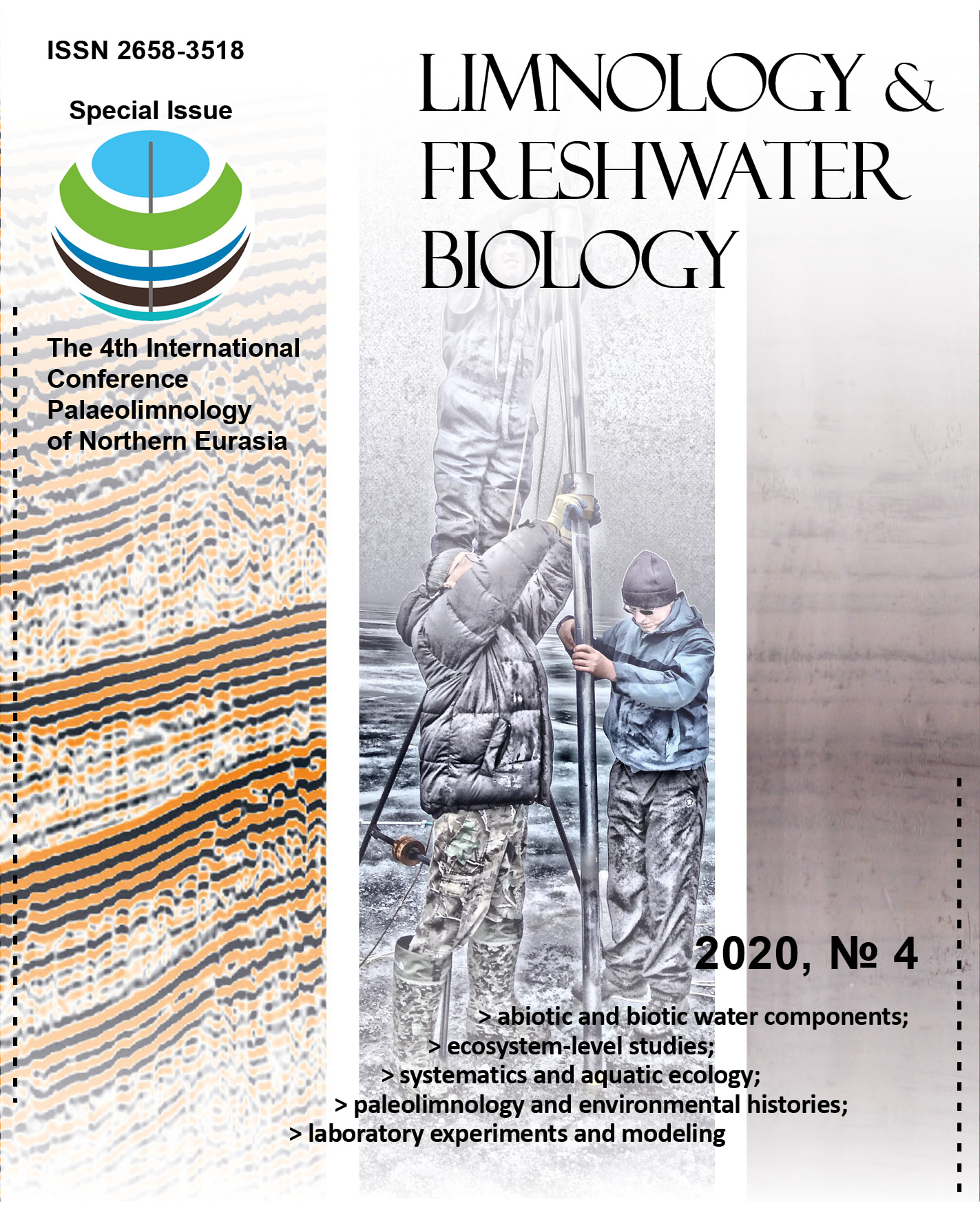Phyllosilicates in bottom sediments of Lake Baunt (northern Transbaikalia) as indicators of paleoclimate
DOI:
https://doi.org/10.31951/2658-3518-2020-A-4-548Keywords:
Bottom sediments, phyllosilicates, XRD analysis, paleoclimate, Transbaikalia, Lake BauntAbstract
The lacustrine sediments are unique natural archives that store records of environmental and climatic changes. We present results of study of the Late PleistoceneHolocene sediments of freshwater Lake Baunt, located in the permafrost zone in northern Transbaikalia. The sediments were studied by X-ray diffraction (XRD), IR spectroscopy, laser granulometry, elemental analysis, AMS dating, etc. The results of mineral analysis of the bottom sediments with an age of ~18 ka showed that they are mainly represented by phyllosilicates, quartz, and feldspars. By the mathematical modeling of complex XRD patterns chlorite, muscovite, illite, mixed-layer illitesmectite and chloritesmectite, and kaolinite identified among the phyllosilicates. It was established that variations of their structural features as well as quantitative proportions in the section are in high correlation with the climate changes and lake level fluctuations. The results obtained helped to reconstruct the evolution of the Lake Baunt basin controlled by the regional climate throughout the Late PleistoceneHolocene.Downloads
Published
Issue
Section
License

This work is distributed under the Creative Commons Attribution-NonCommercial 4.0 International License.






